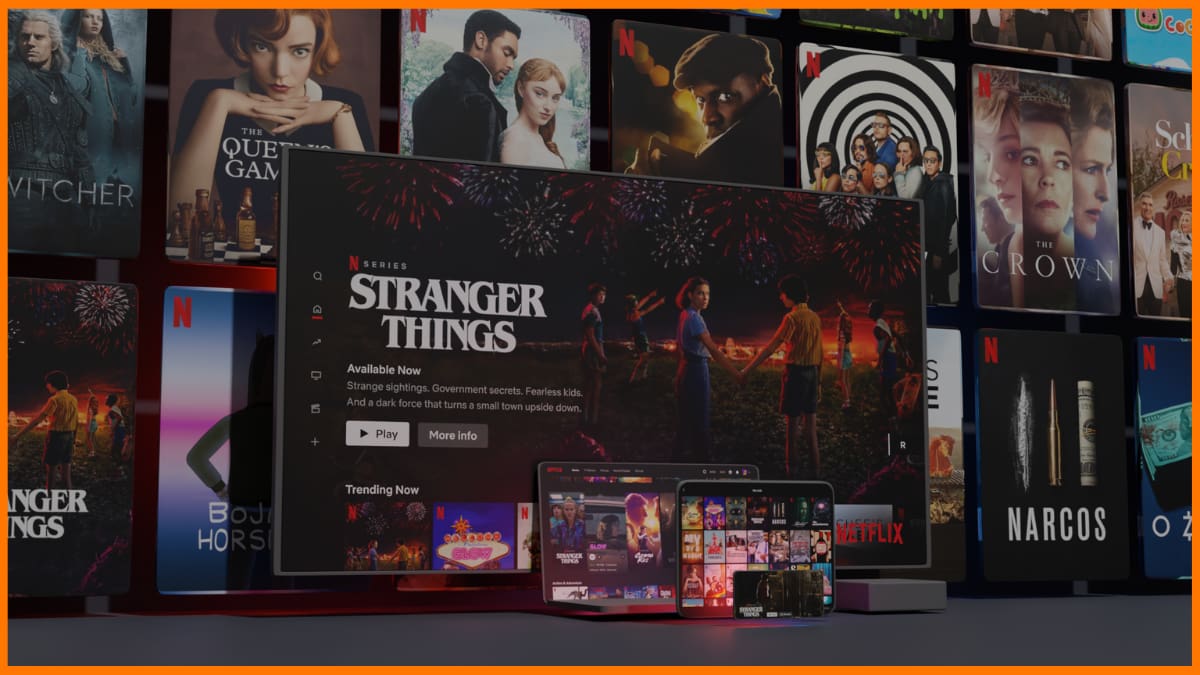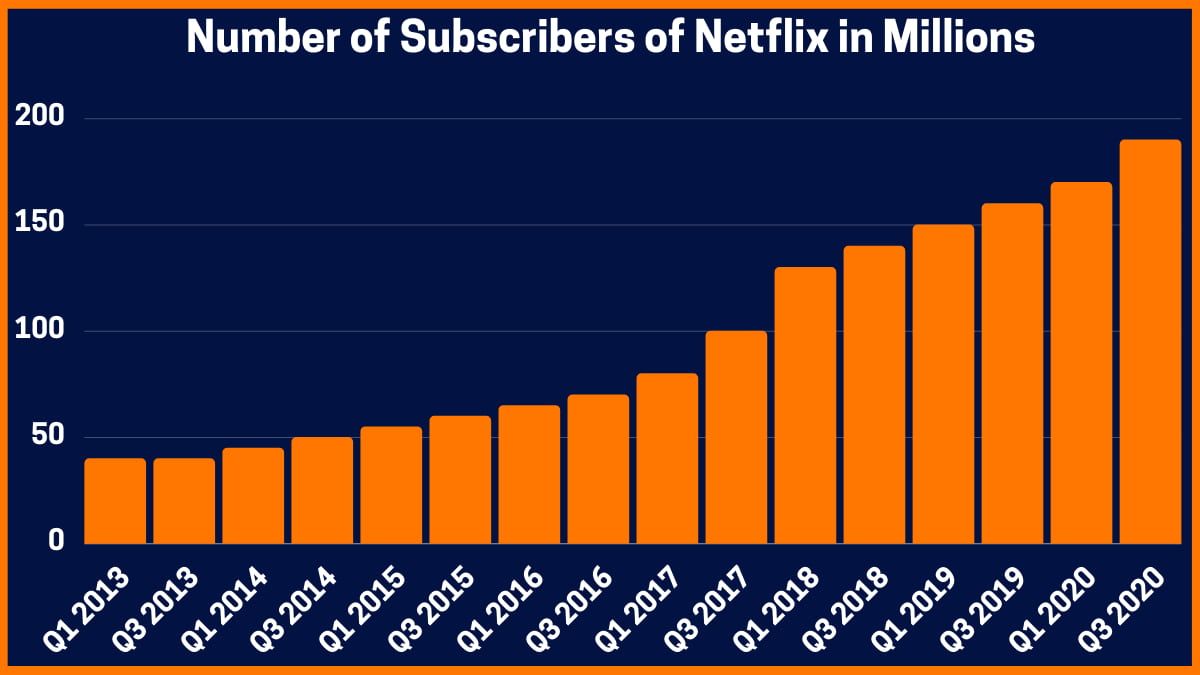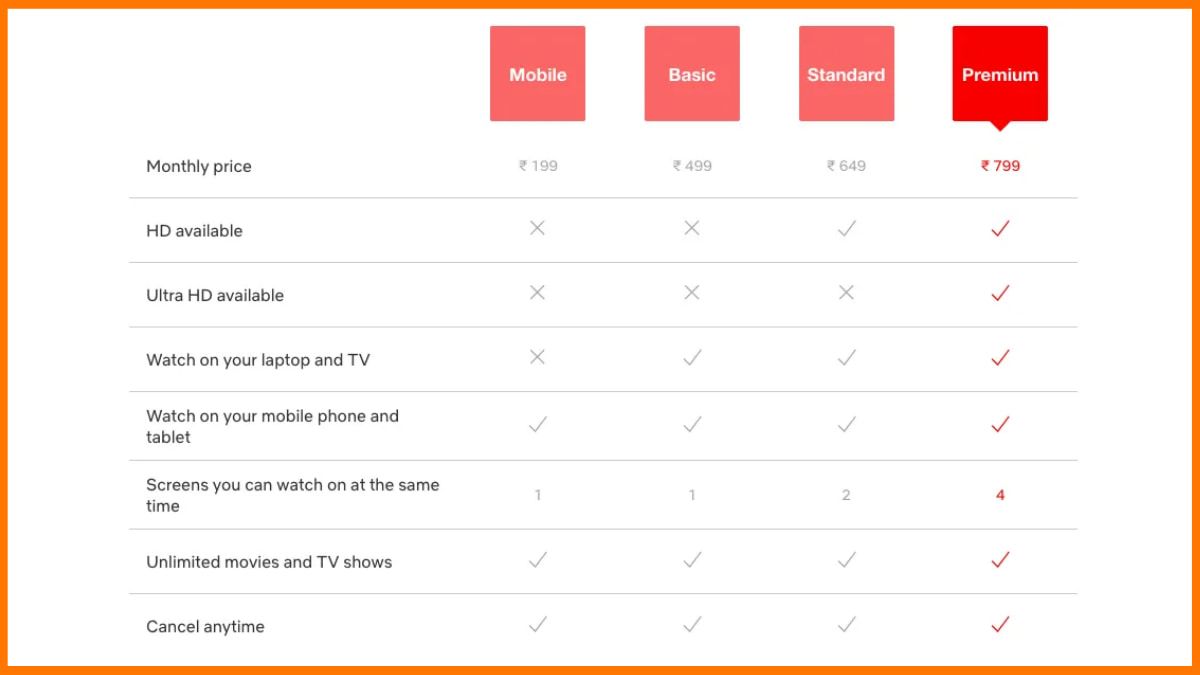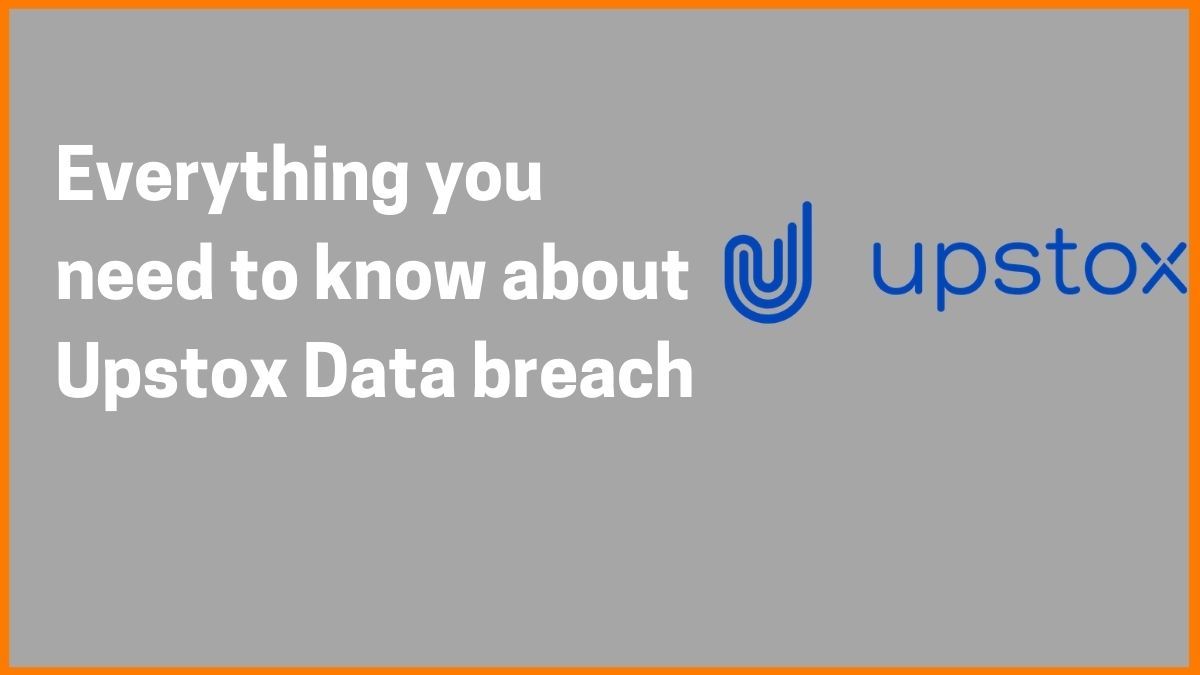In the realm of modern decision-making, the significance of data cannot be overstated. The advent of Business Intelligence (BI) platforms has revolutionized this landscape, providing a means to transform raw data into actionable insights. These platforms streamline the process by facilitating data collection and visualization in a singular, consolidated space. Deloitte’s research underscores the potency of data-driven choices, revealing that companies embracing such decisions are 59% more inclined to act upon their analytics findings and an impressive 77% more likely to achieve their business objectives.
In the ever-evolving marketplace, a plethora of BI platforms saturates the scene, spanning the gamut from highly technical and intricate tools to intuitive and elegantly simple solutions. Navigating this spectrum necessitates a careful evaluation of your SaaS company’s unique needs, including your data ecosystem, sources of information, and authorized data consumers.
To guide you on this journey, here we have curated a selection of 10 highly regarded and diverse BI tools. Keep reading to gain deeper insights into these transformative instruments.
What are Business Intelligence tools?
Business Intelligence tools refer to applications that proficiently gather and transform unstructured data from diverse origins such as literature, periodicals, documents, and images. These tools subsequently employ queries to distill valuable information from the processed data. Additionally, they play a pivotal role in analyzing data, facilitating its integration into reports and statistical visualizations. The versatility of BI tools extends to encompass an array of data analysis functions, encompassing enterprise reporting, mobile BI, real-time BI, and Software as a Service BI. This amalgamation empowers the creation of interactive dashboards, informative scorecards, and statistical software tailored for immersive data visualizations.
Advantages of BI Tools:
- Employees can manage and optimize their Key Performance Indicator(KPI) through various real-time data sources and reports.
- Monitoring and insights over revenue, losses and employee productivity is another key aspect of BI tools. Be it tracking metrics, alerting pitfalls or KPI analysis, these tools have it all covered.
- Insights on customer behavior, interactions and feedback, BI tools help identify loopholes and flaws in your services, which can be further customized in accordance to the customers convenience.
- BI tools enhance efficiency by providing a singular and accurate data source and hence data management is optimized.
- Inaccurate data might lead to unforeseen repercussions. BI tools provide clean and quality data and hence help in generating precise reports.
Popular Business Intelligence (BI) Tools:
Discover the transformative capabilities, benefits, and key features of SaaS Business Intelligence tools that are propelling businesses toward success in a data-centric era.
Zoho Analytics
Microsoft Power BI Pro
Looker
Tableau
Domo
Sisense
Oracle Business Intelligence
MicroStrategy
Yellowfin BI
Pentaho
Zoho Analytics
| Website | www.zoho.com/analytics |
|---|---|
| Rating | 4.4 out of 5 |
| Free Trial | Available |
| Platforms Supported | Web, Android, iPhone/iPad |
| Best For | Data Analysis, Business Reporting, Visualizations |

Zoho, formerly known as Zoho Reports, is a self-service business intelligence and analytics tool allowing users to analyze their business data and create reports and dashboards. With this platform, organizational teams of all sizes can produce reports quickly without IT help.
Moreover, the BI tool employs a simple-to-use assistant, Ask Zia, leveraging artificial intelligence, machine learning, and language processing technologies. Zia enables enterprises to integrate analytics into their strategy and get valuable insights via vital performance indicator widgets and reports. The tool has made it easier for business teams to create reports with its intuitive drag-and-drop interface. Additionally, its cloud-based storage makes it easier for users to share data and reports efficiently.
Furthermore, Zoho Analytics is a great BI tool for several analytical operations, including gathering and combing data, crunching large datasets, and visualizing reports in the form of graphs, charts, summary views, or pivot tables.
Features of Zoho Analytics
- Data Integration: This feature allows business teams to analyze their data from 250+ sources. They can connect their data from files, web URLs, databases hosted in-house or on the cloud, business applications, and more.
- Data Preparation and Management: With Zoho Analytics, users can access a data preparation and management app named DataPrep, which allows for creating and managing data seamlessly.
- Visual Analysis: Zoho Analytics offers a plethora of visualization tools, including charts, pivots, widgets, summaries, and tabular views, to create reports and gain insights.
- Augmented Analytics: Users can leverage technologies like artificial intelligence, machine learning, and natural processing and generation to augment their data analysis and get quick insights.
Pros
- With Zoho Analytics, users can access a powerful formula engine to create any type of calculations needed to assist in creating required reports.
- The BI tool is governed by stringent Security Practices to keep business data safe and secure.
- Easy-to-navigate smart assistant ‘Ask Zia’ allow the tool to centralize data collection and develop a 360-degree view of a company.
- Organizational teams can scale the Zoho Analytics tool as the business grows.
Cons
- Integrating Zoho Analytics for white-label/embedded use cases can be complicated.
- The subscription pricing is per user versus per group of 5-10 users.
- The platform lacks effective customer support.
- Completely manual input with no smart tools to file forms.
Pricing Plans
| Plan | Yearly Price | Monthly Price |
|---|---|---|
| Basic | ₹960/month | ₹1,200/month |
| Standard | ₹1,900/month | ₹2,400/month |
| Premium | ₹4,200/month | ₹5,200/month |
| Enterprise | ₹15,850/month | ₹19,700/month |
Try Zoho Analytics Now
Microsoft Power BI Pro
| Website | powerbi.microsoft.com/en-in/power-bi-pro |
|---|---|
| Rating | 4.6 out of 5 |
| Free Trial | Available |
| Platforms Supported | Web, Android |
| Best For | BI visualization and reporting for desktop, web or mobile |

Microsoft Power BI Pro is the full version of Microsoft Power BI, meaning it provides the complete ability to use Power BI to create dashboards and reports and view, share, and use reports unlimitedly. This business intelligence tool gives users the option and ability to share business data, reports, and dashboards with many other users.
The Power BI Pro is licensed for each user. For instance, an organization with 20 employees will need 20 licenses of the tool to access its full capabilities. Furthermore, it’s a subscription-based platform costing approximately $9.99 per user per month. The plus point is organizational teams can try the tool for free for 60 days before purchasing the subscription.
Features of Microsoft Power BI Pro
- Data Connection: The platform can get data almost everywhere with source connections like Excel, SQL, Text, PDF, Azure, Cloud, CSV, and on-premises data.
- Data-Driven Collaboration: Microsoft Power BI Pro enhances collaboration by using team commenting. The tool also shares rich data visualizations and distributes findings to internal and external organization members.
- Power Query and Power Pivot: Users can access Power Query in Excel and Power Pivot to edit the data in Power BI Pro.
- Custom Visualizations: Power BI Pro has various built-in visuals to help users create dashboards and reports.
Pros
- Business teams can embed Power BI visuals into applications (PowerApps, Teams, SharePoint, etc.)
- The platform allows teams to create APP Workspaces and peer-to-peer sharing.
- Users can navigate integration with other Microsoft solutions like Azure Data Services.
- Power BI Pro enables users to share datasets, reports, and dashboards with other users of the same tool.
Cons
- The platform doesn’t allow users to share reports and dashboards with non-Power BI Pro users.
- Power BI Pro has a maximum data capacity of 10 GB per user, much less than the licensed tool.
- The business intelligence tool has a limited daily data refresh limit of eight times per day.
Pricing Plans
| Plan | Price |
|---|---|
| Power BI Pro (Per User) | ₹ 785.30/user/month |
| Power BI Premium (Per User) | ₹ 1,570.60/user/month |
| Power BI Premium (Per capacity) | ₹ 3,92,257.40/user/month |
Looker
| Website | cloud.google.com/looker |
|---|---|
| Rating | 4.5 out of 5 |
| Free Trial | Available |
| Platforms Supported | Web, Android, iPhone/iPad |
| Best For | Data Exploration, Collaborative Analytics, Business Intelligence |

Looker is a powerful business intelligence platform that helps business teams develop and share insightful visualizations to make informed business decisions. The BI tool is part of the Google Cloud Platform. It offers a user-friendly workflow, customized visuals, collaborative dashboards, and efficient customer support. Looker is completely browser-based, eliminating the need for installing desktop software.
With Looker, users can easily build a customized data exploration platform that makes their data accessible meaningfully and intuitively for the entire company. The platform leverages Data Modelling Language (DML) and incorporates a predefined framework. Looker helps business teams connect with multiple data sources and analyze data efficiently. Regardless of where business data is stored, this BI platform can allow business teams to access the most up-to-date version of their organization’s data. It’s a one-stop solution to visualize, analyze, and manage data.
Features of Looker
- Integrated End-to-End Multiple Cloud Platform: Users can perform data analysis and visualization across Server, Google Cloud, AWS, Azure, SQL, Bigquery, on-premises databases, and more.
- Embedded Data: The business intelligence tool supports embedded analytics and creates customized data experiences.
- Advanced Workflow Development: Looker has a sophisticated workflow system allowing users to create reports and send them on a scheduled timeframe.
- In-Database Architecture: With its In-database Architecture, the platform enables users to skip that ELT layer by directly connecting to their raw data.
Pros
- The BI tool offers performant and scalable analytics on a real-time basis.
- Looker is a browser-based platform, eliminating the need for desktop software.
- Looker facilitates dashboard collaboration, allowing users to develop and publish out-of-the-box git integrations simultaneously.
Cons
- Looker costs more than its alternatives, like Microsoft Power BI.
- Coding in LookML is unavoidable, making it difficult to use by report developers having minimal experience with SQL.
- Compared to Tableau, the platform doesn’t facilitate elegant visuals.
Pricing Plan
Looker offers custom pricing plans. Please visit official website to contact sales team.
Tableau
| Website | www.tableau.com |
|---|---|
| Rating | 4.6 out of 5 |
| Free Trial | Available |
| Platforms Supported | Web |
| Best For | Data Visualization, Business Intelligence, Interactive Dashboards |

Tableau is a business intelligence suited introduced in the market in 2003. It comprises various products, mainly online data processing, visualization, and presentation tools. With Tableau suite products, users can connect to the data source and then fetch, format, visualize, share, and view data. The business intelligence platform mainly focuses on data visualizations among all these data analysis activities. Moreover, when it comes to use groups, Tableau can be used by data analysts and business users. The platform suite is divided into self-service tools for data analysts and managed tools for business users.
The plus point is that the analytical interface of Tableau requires almost negligible coding knowledge for data querying and creation. In addition, business teams can use Tableau to share information across the company with the help of dedicated servers. This suite allows users to access a toolset to manage their server, data, and meta-data.
Features of Tableau
- Informative Dashboards: The BI tool dashboards combine visual objects, text, images, and many other components to present a comprehensive view of the user’s data.
- Support Several Data Sources: With Tableau, users can connect to and fetch data from numerous sources, including local files, big data, spreadsheets, relational and non-relational databases, data warehouses, and on-cloud data. In addition, the platform supports several data connections, including Google Sheets, MemSql, Presto, Google Analytics, Salesforce, and many others.
- Easy Collaboration and Sharing: Users can communicate with each other and exchange data in real time by utilizing Tableau. Data can be shared in the form of sheets, visualizations, dashboards, etc.
- Advanced Visualizations: The platform allows business teams to create visualizations in the form of bar charts, pie charts, Buller charts, histograms, Treemaps, Gantt charts, Motion charts, Boxplots, and many others.
Pros
- Tableau can support complex computations, data blending, and dashboarding to help users create beautiful visualizations that deliver valuable insights.
- The business intelligence tool can seamlessly handle millions of rows of data.
- Tableau Dashboard facilitates a great reporting feature that allows users to customize dashboards, particularly for certain devices like laptops or mobile phones.
Cons
- Tableau doesn’t offer scheduling or notification of reports. Therefore, users need to update the data in the back-end manually.
- The parameters of this BI tool are static and allow users to select only a single value using a parameter.
- Since Tableau is mainly a data visualization tool, users can process basic data.
Pricing Plan
Tableau offers custom pricing plans. Please visit official website to contact sales team.

Domo
| Website | www.domo.com |
|---|---|
| Rating | 4.3 out of 5 |
| Free Trial | Available |
| Platforms Supported | Web, Android, iPhone/iPad |
| Best For | Business Intelligence, Data Visualization, Cloud Analytics |

Domo is a cloud-based business intelligence tool for large and small enterprises. The platform helps organizations collect and transform raw data stored across one or multiple databases into focused reports, graphs, and dashboards. Simply put, it provides users with direct, simplified, and real-time access to business data enabling business executives to make well-informed decisions with minimal IT involvement. Moreover, Domo integrates with various data sources, such as databases, spreadsheets, social media, cloud-based or on-premise software solutions, etc.
With this software-as-a-service (SaaS) platform, CEOs and managers can access dashboard-style data aggregators helping them track business operations quickly and painlessly. It started with a theme of connecting all the user’s data at the scale of thousands of connectors and trillions of rows of data. Furthermore, its simple drag-and-drop ELT process aid users in combining and transforming business data without requiring any coding knowledge.
Features of Domo
- Reporting and Dashboards: The BI tool boasts 150+ chart types, 7,000+ custom map options, drag-and-drop ad hoc analysis, easily deployed dashboards, content creation, and shareable calculations.
- Connect Data: With Domo, users can access over 1,000 pre-built cloud and on-premises connectors, custom connections via APIs, SDKs or Webhooks, multi-cloud, federated data, custom connectors, partitioned connectors, and more.
- Data Transformation: Domo facilitates SQL dataflows (coded data flows), Magic ELT (drag-and-drop ELT flows), interactive dataset views, data science studio, interactive instance catalog, etc.
- Security and Governance: In terms of security and governance, users can leverage data lineage, flexible security (from GGAC to content-based security with Domo PDP), UI and API-based user management options, trusted attributes, Domo stats, and more.
Pros
- Domo is a mobile platform that allows executives to run their business via mobile phones, offering 24/7 data accessibility.
- Users can integrate data from any source, including Google Analytics, email, cloud CRM, and more.
- Business teams can directly connect social media data from multiple platforms to Domo to understand their online presence.
- Domo provides easy access to information necessary for the executives to make well-informed business decisions, regardless of their expertise and knowledge.
Cons
- Domo’s UI is not intuitive and simple enough, making it difficult for non-technical users to use the tool.
- It’s expensive for small businesses.
- It can be difficult for users to extract data from Domo.
Pricing Plan
Domo offers custom pricing plans. Please visit official website to contact sales team.
Sisense
| Website | www.sisense.com |
|---|---|
| Rating | 4.5 out of 5 |
| Free Trial | Available |
| Platforms Supported | Web, Android, iPhone/iPad |
| Best For | BI & dashboard software for multiple, large data sets |

Sisense is an artificial intelligence-driven business intelligence (BI) software introduced in 2004. The tool is primarily used to simplify and analyze complex data, create visualizations, reports, and dashboards, and discover and share insights with enterprise decision-makers. Its easy-to-use drag-and-drop interface and interactive dashboard make it seamless for non-techies to prepare, analyze, and visualize complex datasets. Sisense infuses analytics into different streams of work business teams are involved in and creates a self-service experience to provide AI-based information to organizations.
The leading BI platform is ideal for companies with limited IT resources and experience with BIG data. Sisense includes data visualization, AI analytics, and data modeling. It facilitates multiple features like disaster recovery and attack surface monitoring, making it a scalable platform. With Sisense, managers can have a complete 360-degree view of the information across hardware, workstreams, and other infrastructure, enabling quick and informed decision-making.
Features of Sisense
- Unlimited Dashboards: Sisense allows its users to create unlimited dashboards that can be easily shared with other users via email.
- Single-Sign-On Authentication: The BI platform uses Single-Sign-On authentication, reducing password fatigue and increasing user productivity.
- Tracking KPIs: With Sisense Pulse, users can keep track of the most critical KEY performance Indicators (KPIs) across multiple dashboards and build alerts.
- Efficient Architecture and Big Data Analysis: The tool’s architecture efficiently uses the CPU, RAM, and disk space, allowing business teams to run Bid Data analysis on economical hardware.
Pros
- Sisense is a one-stop BI solution, enabling users to do multiple tasks, from data modeling to complex calculations.
- The BI tool offers built-in connectors and smooth integrations with various third-party applications, including Excel, Google Adwords, Salesforce, Zendesk, and others.
- Sisense is a flexible platform as it offers a cloud-based and on-premise option.
- Sisense uses a columnar database approach, making it easier for the tool’s system to pull big queries.
Cons
- The BI tool is too ‘heavy’ in terms of the server’s power and the amount of space and resources the application takes.
- Sisense’s dashboards only interact on the web.
- Users can’t share a report with users outside of the Sisense system.
Pricing Plan
Sisense offers custom pricing plans. Please visit official website to contact sales team.

Oracle Business Intelligence
| Website | www.oracle.com/in/business-analytics/business-intelligence/technologies/bi.html |
|---|---|
| Rating | 4.1 out of 5 |
| Free Trial | Not Available |
| Platforms Supported | Web, Android, iPhone/iPad |
| Best For | Enterprise Analytics, Advanced Reporting, Big Data Integration |

Oracle Business Intelligence, also popularly known as Oracle BI, is a unique cloud-based suite that helps small and large enterprises to uncover new insights and make quick, informed business decisions. The platform offers agile visual, predictive analytics, and self-service discovery combined with best-in-class enterprise analytics to facilitate decision-making.
With Oracle Business Intelligence, business teams can access instant mobile and highly interactive dashboards, just-in-time alerts, powerful operational reporting, strategy management, content and metadata search, Big Data sources, streamlined systems management, and sophisticated in-memory computing.
The tools offered by the BI platform allow companies to communicate strategic business goals with their departments and track progress with scorecards. Moreover, users can use the solution to access existing data from the system and create financial, production, and interactive reports via key metrics. Oracle Business Intelligence is a comprehensive solution that can help organizations reduce the total cost of ownership and boost the return on investment.
Features of Oracle Business Intelligence
- Dashboards: With Oracle Business Intelligence, users can create, view, and interact with personalized dashboards based on their predefined role. Business teams can explore data freely alongside a guided navigation path leading enterprises to new insights.
- Report Type: The BI platform can help users generate various reports, including interactive reports, ad-hoc analyses, or custom reports, and select from pre-built reports.
- Big Data: The in-memory processing power of Oracle BI allows users to incorporate bid data sets without integrating another solution. The platform can draw data from several sources, such as Google Analytics, Hadoop, HIVE, etc.
- Augmented Analytics: The tool leverages machine learning and AI to enhance the user’s experience by streamlining the analytics process.
Pros
- The Oracle BI platform lets users access a wide selection of interactive dashboards, graphs, charts, and other visualization tools.
- The solution allows users to analyze enormous datasets efficiently without technical support.
- Business teams can set predefined alerts for real-time updates when the system is triggered or scheduled.
Cons
- Users report constant issues and bugs to the Oracle Business Intelligence platform.
- The platform lacks visual appeal.
- Many users found the platform’s architecture farraginous, with poor customer support.
Pricing Plan
Oracle Business Intelligence offers custom pricing plans. Please visit official website to contact sales team.

MicroStrategy
| Website | www.microstrategy.com |
|---|---|
| Rating | 4.3 out of 5 |
| Free Trial | Available |
| Platforms Supported | Web, Android |
| Best For | Enterprise Analytics, Mobile Business Intelligence, Data Discover |

MicroStrategy is an enterprise business intelligence (BI) platform with multiple features to help businesses make data-driven decisions and optimize processes. Its product suite includes Embedded Intelligence, HyperIntelligence, Consulting, Cloud, Education, and BI and Analytics tools. Its user-friendly and intuitive tools and capabilities include interactive dashboards, ad hoc queries, scorecards, formatted reports, automated report distribution, and alerts. All these tools let end users and BI professionals perform multiple tasks like data discovery, wrangling, visualization, and big data analytics.
Users can deploy MicroStrategy’s architecture on premises with Windows or Linux servers or as a Microsoft Azure or AWS cloud service. Moreover, its client interfaces allow users to access the platform via the web, Windows, Mac, or mobile devices. Users can also access a software developer kit (SDK) when utilizing MicroStrategy to customize and integrate an application with other applications. Additionally, the platform contains APIs and gateways allowing users to integrate MicroStrategy functionalities with third-party analytics tools.
Features of MicroStrategy
- Data Discovery: The software can connect to and interact with various types of data sources and gather and jumble data from numerous sources to generate insightful reports.
- Data Wrangling: This feature allows users to transform business data into useful information and modify it according to their needs.
- Data Mining and Predictive Analysis: MicroStrategy enable users to incorporate third-party data mining and modeling tools and use them to build and design predictive and easily accessible reports.
- Analytical Functions: The BI platform has a huge library of around 300 functions, like data mining, mathematics, financial, OLAP, etc., that help build strongly interactive and information reports and conduct statistical analysis.
Pros
- MicroStrategy has a user-friendly interface, making it easier for users to access and analyze data.
- MicroStrategy is a highly customizable BI platform that can be tailored to meet the specific needs of organizational departments and teams.
- The platform is designed to be scalable, enabling small businesses and large enterprises to use it seamlessly.
Cons
- The BI tool can be expensive, particularly for large companies requiring multiple licenses and support.
- Although MicroStrategy has a user-friendly interface, some users find it complex and difficult to use.
Pricing Plan
MicroStrategy offers custom pricing plans. Please visit official website to contact sales team.
Yellowfin BI
| Website | www.yellowfinbi.com |
|---|---|
| Rating | 4.6 out of 5 |
| Free Trial | Available |
| Platforms Supported | Web, Android, iPhone/iPad |
| Best For | Enterprise Analytics, Mobile Business Intelligence, Data Discovery |

Yellowfin Business Intelligence, also called Yellowfin BI, is an integrated data analytics platform that renders companies with innovative business intelligence tools, including dashboards, reporting, data transformation, and analytical applications. It’s a single integrated solution developed for organizations across varying industries and scaling sizes. Moreover, users can customize the platform to suit businesses in accounting, agriculture, advertising, marketing, insurance, manufacturing, food, technology, and many other fields.
From insightful dashboards, scorecards, and predictive analytics, to online analytical processing, report generation, and performance management, the business team can access all these key functionalities to make informed business decisions. Moreover, the Yellowfin BI platform facilitates collaboration and storytelling to help businesses reduce the complexity of data analytics. Business teams can better comprehend and analyze data using modern, action-based dashboards. Furthermore, the BI tool is browser agnostic, making it accessible from desktops and mobile devices.
Features of Yellowfin BI
- Action-based Dashboards: Users can take their dashboards to the next level with embedded operational workflows via no code or low code development environment.
- Automated Business Monitoring: Business teams can discover changes and outliers in their data as they occur through threshold-based alerts or automated AI-driven signals.
- Data Stories: Yellowfin BI can help reduce the time it takes to tell insightful data stories with its rich data visualizations.
- Management Reports: The BI platform allows users to generate professional data-driven management reports and presentations.
Pros
- The platform allows real-time, trend, and predictive analysis, helping users know the market and make good decisions.
- Yellowfin BI facilitates mobile access, allowing the business team to monitor and collect data at any time and place.
- The powerful tool enables data visualization in an easy-to-understand format.
Cons
- Data extraction can be a bit slow with Yellowfin BI.
- Integrating the platform with third-party tools can be quite cumbersome.
- Many users find generating some reports difficult, as it sometimes lags and hangs.
Pricing Plan
Yellowfin BI offers custom pricing plans. Please visit official website to contact sales team.
Pentaho
| Website | www.hitachivantara.com/en-us/products/pentaho-platform/data-integration-analytics.html |
|---|---|
| Rating | 4.3 out of 5 |
| Free Trial | Available |
| Platforms Supported | Web, Android, iPhone/iPad |
| Best For | Data Integration, Business Analytics, Big Data Processing |

Pentaho is a commercial open-source business intelligence (BI) tool that helps organizations make data-driven decisions. The platform provides access to data integration, information dashboards, OLAP services, reporting, data mining, predictive analytics, and extract, transform, load (ETL) capabilities. Its data integration functionality allows users to find, manage, and combine data from various sources, such as native support for analytic databases, NoSQL, and Hadoop. Moreover, now that Pentaho is data agnostic, it is suitable for embedding or white labeling visual analytics as a part of third-party SaaS/software applications. Users can rebrand and customize the application based on open standards and architecture.
Pentaho offers predictive analytics that further facilitates machine learning algorithms, tools to process data, and the capability to import third-party models with PMML. In addition, users can translate big data into sights within this singular platform. The BI tool allows users to access a complete spectrum of data from several sources via its adaptive big data layer, taking the data source into account. Built on open architecture, the software can be integrated with multiple systems.
Features of Pentaho
- Reporting: Pentaho Bi reporting tools help generate reports on-demand and according to the fixed schedule set by the user.
- Dashboard: The dashboard serves as the front face of the platform that offers well-reported content, analysis, and layout.
- Data Mining: With the data mining feature, users can interact with the data at the graphical and program level for further analysis.
- Data Integration: The data integration tool possesses various resources in terms of transformation libraries and mapping objects that allow business teams to integrate data across all levels. Moreover, the platform’s data integration templates are reusable.
Pros
- Pentaho is a highly intuitive and scalable tool.
- It uses a user-friendly GUI and offers 24/7 technical support.
- The BI platform is the one-stop solution for ELT, reporting, and analysis.
Cons
- The components of Pentaho can be present in a segregated mode.
- The BI system has a fragile unified interface.
- Compared to other BI tools, Pentaho technology evolves much slower.
Pricing Plan
Pentaho offers custom pricing plans. Please visit official website to contact sales team.
Conclusion
In the realm of modern business, SaaS Business Intelligence (BI) tools have emerged as vital assets, seamlessly combining cloud technology and advanced analytics. These tools democratize data insights, enabling real-time access and collaborative decision-making across devices. The diverse array of tools available reflects the unique needs of businesses, propelling them into an era of data-driven strategies. As technology advances, embracing SaaS BI tools becomes essential for maintaining a competitive edge. With data as a compass, businesses chart a course to success that’s both informed and achievable.
FAQs
What are SaaS Business Intelligence (BI) tools?
SaaS BI tools are cloud-based applications that offer advanced analytics and data visualization capabilities to help businesses transform raw data into actionable insights. They enable users to access and analyze data in real time, facilitating informed decision-making.
How do SaaS BI tools differ from traditional BI solutions?
SaaS BI tools are hosted in the cloud and accessed through web browsers, eliminating the need for complex on-premise installations. Traditional BI solutions often require significant infrastructure investments and maintenance.
What advantages do SaaS BI tools offer?
SaaS BI tools offer several benefits, including lower upfront costs, faster deployment, scalability, and accessibility from various devices and locations. They also often include regular updates and improved collaboration features.
What features should I look for in a SaaS BI tool?
Key features to consider include data visualization capabilities, user-friendly interfaces, integration with various data sources, scalability, security measures, and the ability to create customizable dashboards and reports.
Can SaaS BI tools handle large volumes of data?
Yes, many SaaS BI tools are designed to handle vast amounts of data.
Are SaaS BI tools secure?
Yes, reputable SaaS BI providers implement robust security measures, including encryption, access controls, and compliance certifications, to safeguard sensitive business data.
How do I choose the right SaaS BI tool for my organization?
To choose the right tool, consider your organization’s specific needs, such as data sources, user requirements, budget constraints, and scalability. Conduct thorough research, read reviews, and consider trial periods to determine which tool aligns best with your objectives.










































